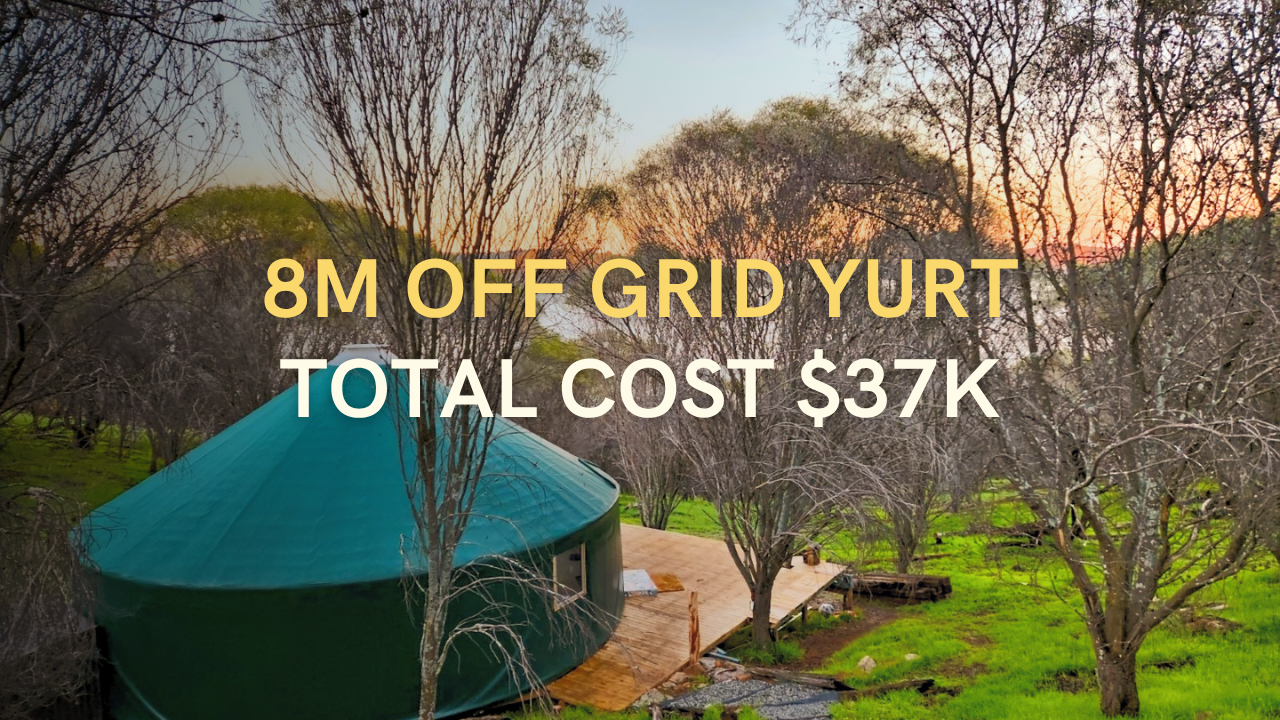Yurts are more than just tents; they’re a testament to nomadic ingenuity. Originating from the steppes of Central Asia, these circular dwellings have housed Mongolian families for thousands of years. Traditionally constructed from wood and felt, yurts are designed to be both portable and sturdy. Today, they capture the imagination of eco-conscious adventurers worldwide, from the bushlands of Australia to the forests of North America.
Let’s explore the evolution of yurt materials, from traditional woods and wools to the modern materials we use at Yurt in the Dirt. You’ll discover how these materials have adapted over time to withstand extreme climates and diverse environments, particularly our harsh Australian conditions.
Traditional Yurt Materials and Construction
Framework
The backbone of any traditional yurt is its lattice structure, known as khana. Made from lightweight, flexible woods such as willow, birch, poplar, or bamboo, these crisscrossed poles provide both strength and portability. This clever design allows the yurt to be easily assembled and disassembled, fitting perfectly with the nomadic lifestyle.
At Yurt in the Dirt, we’ve maintained this traditional lattice design while adapting the materials. Our wall frames combine bamboo lattice with aluminum frames and channels, giving you both the authentic aesthetic of traditional yurts and the durability needed for permanent installation in Australian conditions.
Roof and Crown (Toono)
In traditional yurts, the roof is anchored by the toono, or central crown. This crucial component serves as both a structural and cultural keystone. From it, the roof poles, or uni, extend outward, creating the yurt’s distinctive dome shape. The design not only supports the structure but also allows smoke to escape and air to circulate.
Our modern interpretation uses pine roof rafters that extend from the wall frame to a central supporting ring, maintaining the traditional design while enhancing structural integrity. We’ve also upgraded the central crown with a clear polycarbonate dome skylight that floods your space with natural light – a feature not found in traditional yurts but perfect for modern Australian living.
Coverings
The primary covering of traditional yurts is felt, produced from the wool of sheep, goats, or yaks. This felt is crafted using age-old processes unique to the Central Asian steppes, where the wool is compressed into thick, insulating layers. To further protect against the elements, animal hides and canvas are often added.
For Australian conditions, we’ve evolved beyond these traditional materials. Our yurt covers use durable, waterproof, and UV-resistant double-coated PVC canvas specifically designed to withstand our harsh sun. While traditional coverings might need frequent replacement, our covers last 7-10 years in the Australian climate before needing renewal.
Insulation and Weatherproofing
A typical traditional yurt features three to five layers of felt, providing substantial insulation against the extreme temperatures of the steppe. This multi-layered approach keeps the interior warm during freezing winters and cool during scorching summers.
We’ve maintained this principle of layered protection while upgrading the materials. Our yurts feature felt insulation installed between the inner lining and outer cover, keeping your space comfortable year-round. Unlike traditional yurts, our insulation is mold and mildew resistant – a crucial adaptation for Australia’s varied climate zones from tropical north to temperate south.
Modern Adaptations for Australian & NZ Conditions
Materials for Durability
While traditional yurts were designed for regular disassembly and transport, most of our customers want a semi-permanent structure that can withstand years of Australian weather. That’s why we’ve embraced modern materials that boost durability without sacrificing the essence of yurt design.
Our combination of traditional elements (bamboo lattice, felt insulation) with modern materials (aluminum frames, PVC canvas) creates a structure that honors yurt heritage while standing up to contemporary demands.
Structural Innovations
The structural integrity of modern yurts has seen significant improvements with the incorporation of metal components. At Yurt in the Dirt, our aluminum channels and frames provide a robust foundation that allows your yurt to serve as a comfortable, long-term living or recreational space.
We’ve also enhanced the traditional design with practical features like a fir wood double door (900mm wide) with fixed glass panels and locks – providing security that nomadic yurts never needed but modern Australian lifestyles demand.
Climate Control
Traditional yurts relied solely on felt layers and the opening in the crown for temperature regulation. We’ve maintained these principles while adding modern solutions like our whirly bird style ventilation system that improves air flow and helps expel hot air and condensation – particularly important in Australia’s hot summers.
Our yurts also come with a small cantilever window (900mm x 675mm) of glass and aluminum construction, with additional windows available if desired. These modern additions maintain the yurt’s connection to the outdoors while giving you control over your environment.
The Complete Package
Unlike traditional yurts that were built from locally available materials, our Yurt in the Dirt packages come complete with everything you need:
- All components from the durable outer cover to the interior liner (available in champagne beige or golden honey)
- Anchor kit and fixings for secure installation
- Shipping to your nearest Australian port (Perth, Sydney, Melbourne, Adelaide, Brisbane)
- A 3-year warranty on the frame and cover
We’ve taken the ancient wisdom of yurt design and adapted it specifically for Australian conditions and modern lifestyles. The result is a structure that connects you to a rich cultural heritage while providing practical, comfortable space for today’s needs.
Conclusion
Yurts exemplify versatility and resilience, adapting from ancient shelters on the vast steppes to modern dwellings in the Australian landscape. At Yurt in the Dirt, we’re proud to be part of this evolution, balancing tradition with innovation to create spaces that are both meaningful and practical.
As we continue to face environmental challenges and housing alternatives become increasingly important, the yurt stands as a beacon of sustainable practices, blending the wisdom of the past with innovations for the future. Our modern Australian yurts honor this legacy while creating new possibilities for comfortable, flexible living.












